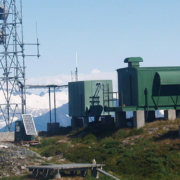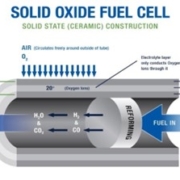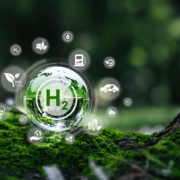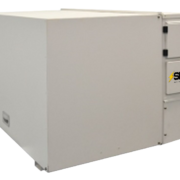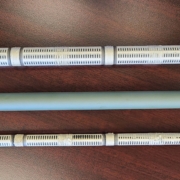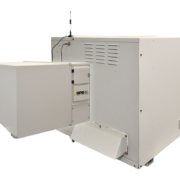What if the North Pole was Powered by Solid Oxide Fuel Cells?
As the Special Power Sources team has been working diligently to create new systems to solve various power needs, they thought it would be fun to dream up what it would look like if Santa decided to power the North Pole with Solid Oxide Fuel Cells (SOFC).
This post highlights the fictitious scenario.
SOFC as the Primary Power Source
The North Pole will utilize an advanced solid oxide fuel cell power grid as the primary power source. Santa and his team of elven engineers chose SOFCs because of their ability to withstand extreme temperatures while maintaining optimal performance and their low maintenance allowing the elves to focus more time on toy building.
These fuel cells provide a stable and reliable source of electricity, maintaining consistent energy needed for the precise toy manufacturing processes.
The energy produced from the fuel cells is passed to the workshops, living quarters and the rest of the village through specialized Christmas lights that act as power lines for the village. Excess energy is stored in specialized batteries to act as buffers to ensure consistent power if needed.
Fueling the Fuel Cells
The North Pole, with its abundant ice reserves, becomes a natural source for hydrogen production which will be used to fuel the SOFCs. Elves utilize electrolysis to extract hydrogen from water ice, leveraging the cold temperatures for energy-efficient electrolysis and utilizing surplus renewable energy sources such as wind. The harvested hydrogen is then stored for later use in the solid oxide fuel cells.
With the fuel flexibility of fuel cells, Santa’s team could also utilize propane, wind energy, or biogas made from reindeer excrement to fuel the fuel cells.
The Process of Transmitting and Storing of Energy
We assume that the North Pole does not maintain the same level of energy usage throughout the year, so to manage variable energy demands, excess hydrogen produced during low-activity periods must be stored using advanced hydrogen storage technologies. This stored hydrogen is then efficiently distributed to the fuel cells during peak energy demand, i.e. Christmas time.
Energy storage must also be taken into consideration when addressing the intermittent energy demands of the North Pole. The elven engineers decided to utilize high-capacity lithium-sulfur batteries that store excess electricity and can act as buffers to ensure continuous power during peak production periods.
Maintaining Performance in Cold Temperatures with Improved Efficiency
The most challenging aspect of maintaining energy production in a place like the North Pole is the potential for extremely cold weather. With average winter temperatures at -40℃ producing energy with most systems is nearly impossible. Thankfully the elves can use the excess heat waste from the SOFCs to keep the systems functioning optimally.
By enclosing the SOFC system, the heat waste can keep temperatures high enough for stable operations. The energy stored within the batteries can also be utilized to heat the environment if needed.
Additionally, the waste heat generated can be captured and utilized to maintain the optimal temperature within the workshops and residential areas. The rest of the waste heat is also redirected to support additional processes such as water heating for the hot cocoa machines.
Turning Concepts into Reality
We all know that the North Pole is powered by magic so Santa has no real need for fuel cells. However, it is a fun concept to imagine and one that is not too far from reality.
At Special Power Sources, we explore new concepts every day to find new and innovative ways to meet unique power generation needs with our fuel cells. If you have a concept that could utilize the unique benefits offered by SOFCs then get in touch with our team. We can help you turn the concept into reality.


